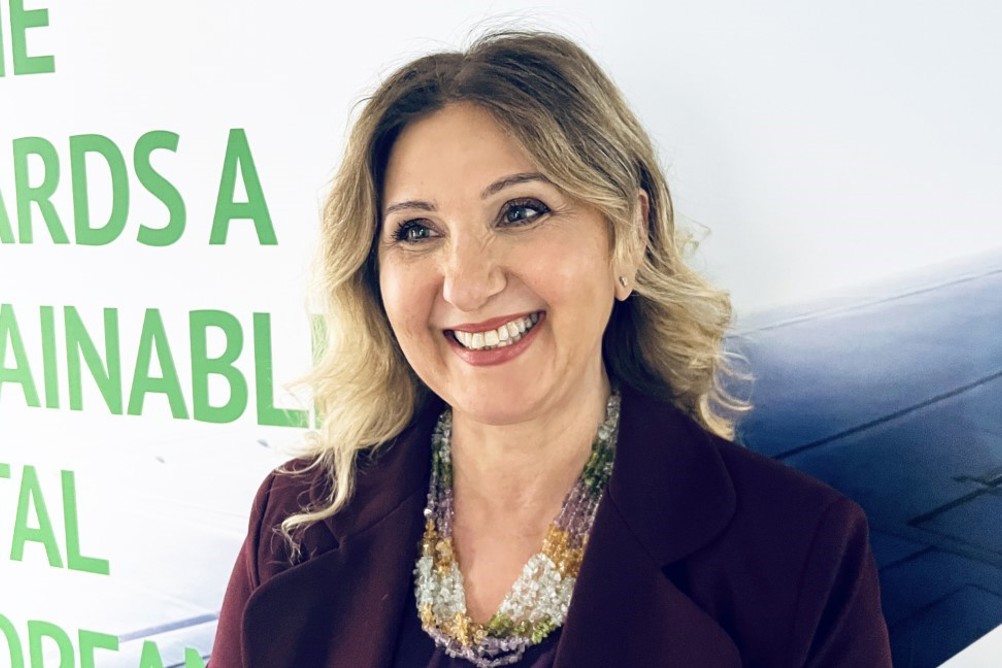
As air traffic management in Europe continues on its journey of digital transformation, the SESAR Deployment Manager is a guiding hand, ensuring the successful implementation of technology programs through coordination and synchronisation and preparing for future initiatives.
In this interview, Mariagrazia La Piscopia, executive director of SESAR Deployment Manager (SDM), discusses how SESAR deployment is evolving, the challenges of implementation, and the critical role of stakeholder coordination in shaping the European sky.
Q: Will SDM’s role change with the new EU political mandate, particularly with regards of accelerating digitalisation of European ATM?
A: Digitalisation is a core priority for the European Commission, alongside sustainability and security. Common Project One (CP1) is essentially the roadmap for ATM’s digital transformation, and SESAR deployment is central to implementing these changes.
The key short-term focus is on System-Wide Information Management (SWIM) and Trajectory-Based Operations (TBO). However, ensuring interoperability across Europe is equally critical, as fragmentation remains a challenge. By fostering a harmonised, cross-border approach, we can effectively reduce inefficiencies and enhance ATM operations.
Q: What are SDM’s immediate priorities?
A: Our priority remains CP1, particularly the full deployment of SWIM and TBO. Additionally, we are committed to providing ongoing support to stakeholders in their deployment endeavours.
Over the years, we’ve seen that stakeholders require continuous coordination and guidance to succeed. As part of this effort, we have refined the SESAR Deployment Programme and enhanced the description of the technical requirements to ensure a synchronised and effective rollout.
Another critical element is securing funding opportunities, as financial support has been instrumental in accelerating deployment.
Q: What are the key challenges in implementing CP1 functionalities?
A: One of the main challenges is ensuring that all stakeholders understand and meet the requirements. It was initially believed that existing deployment guidelines were sufficient, but further refinements were needed.
The lack of standardisation and varying levels of maturity in different technologies have also posed difficulties.To overcome these challenges, we’ve strengthened stakeholder support, refined technical specifications, and worked to ensure a harmonised approach across Europe.
Q: You’ve highlighted the importance of SWIM and trajectory sharing. Can you elaborate on their current status and impact on European ATM?
A: SWIM is a game changer for European ATM, enabling seamless information exchange across different systems and stakeholders. However, we realised that more guidance was required for a harmonised deployment.
By refining deployment requirements and ensuring all stakeholders adopt a unified approach, we can maximise the benefits of SWIM. Similarly, TBO will enhance flight efficiency and predictability, reducing delays and improving overall network performance. These capabilities are crucial for modernising ATM and achieving sustainability targets.
Q: Given SDM’s role in coordinating over 100 stakeholders, what strategies have proven most effective in ensuring alignment and commitment?
A: Our unique setup is also our key strength. We involve operational stakeholders directly in SDM’s governance, management and at the working level.
Our team includes professionals from airports, airlines, and air navigation service providers (ANSPs), ensuring we have the necessary expertise. Additionally, we conduct extensive consultations—sometimes lasting up to six months—to ensure consensus and buy-in.
Regular engagement and a collaborative approach help maintain alignment and commitment across diverse stakeholders.
Q: How do you see civil-military cooperation evolving within SESAR projects, and what role does SDM play in fostering this collaboration?
A: The European Defence Agency (EDA) is a key partner in enhancing civil-military cooperation. We recently renewed our partnership with EDA to strengthen interoperability efforts.
The collaboration has become even more crucial given the current geopolitical situation, which has significantly impacted airspace availability and daily operations. By working together, we aim to improve airspace management, enhance security, and support military stakeholders in securing funding for dual-use technologies.
Q: How is SDM contributing to the European Green Deal objectives, and what sustainability achievements can we expect in the short to medium term?
A: ATM can play a crucial role in achieving sustainability goals. Digitalisation and interoperability directly contribute to reducing fuel consumption and CO2 emissions. By optimising flight paths, minimising holding patterns, and improving ground operations, we can achieve significant environmental benefits.
Our ongoing SESAR deployment projects have already resulted in an estimated reduction of 13.6 million tons of CO2 by 2035, with an expected increase to 20 million tons by 2040. These achievements highlight the tangible impact of SESAR deployment on sustainability.
Q: What lessons from the last decade of SESAR deployment are shaping SDM’s plans for CP2, and how can stakeholders prepare for this new phase?
A: A key lesson is the need for a more consolidated approach to project implementation. Initially, SESAR deployment involved lots of small projects, but we have shifted to fewer, more comprehensive projects with broader stakeholder participation. This approach reduces fragmentation and ensures more effective coordination at European level.
Another important lesson is the critical role of funding in accelerating deployment. Looking ahead to CP2, we aim to build on these lessons by maintaining a strong coordination framework and ensuring that all stakeholders are aligned from the outset.
Q: Any final thoughts on SESAR deployment and its impact on European aviation?
A: The progress we’ve made so far is the result of the commitment of stakeholders who believe in SESAR deployment and count on its benefits. Our achievements in CP1 demonstrate the power of well-coordinated, well-supported implementation.
Moving forward, we must continue to build on this foundation, ensuring that European ATM remains at the forefront of innovation and efficiency.
The successful deployment of SESAR technologies is transforming European ATM, enhancing sustainability, and interoperability. With CP1 well underway and preparations for CP2, SESAR Deployment Manager remains dedicated to guiding stakeholders through this complex yet crucial transition.
Collaboration, coordination, and digitalisation as one team will be key to unlocking the full potential of a single European sky.
